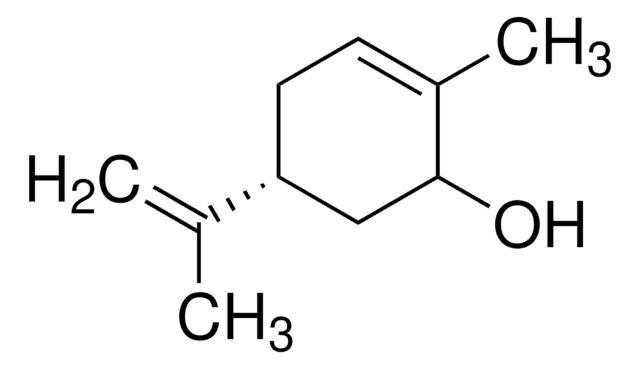213748
1,2-Hexadecanediol
technical grade, 90%
Synonym(s):
1,2-Dihydroxyhexadecane, 1,2-Hexadecylene glycol, 2-Hydroxycetyl alcohol
About This Item
Recommended Products
grade
technical grade
Assay
90%
mp
68-72 °C (lit.)
SMILES string
CCCCCCCCCCCCCCC(O)CO
InChI
1S/C16H34O2/c1-2-3-4-5-6-7-8-9-10-11-12-13-14-16(18)15-17/h16-18H,2-15H2,1H3
InChI key
BTOOAFQCTJZDRC-UHFFFAOYSA-N
Looking for similar products? Visit Product Comparison Guide
Application
- Au-Fe3O4 hetero-dimers
- iron pyrite nanocrystals
- monodisperse iron platinum nanoparticles
Storage Class Code
11 - Combustible Solids
WGK
WGK 1
Flash Point(F)
361.4 °F - closed cup
Flash Point(C)
183 °C - closed cup
Personal Protective Equipment
Certificates of Analysis (COA)
Search for Certificates of Analysis (COA) by entering the products Lot/Batch Number. Lot and Batch Numbers can be found on a product’s label following the words ‘Lot’ or ‘Batch’.
Already Own This Product?
Find documentation for the products that you have recently purchased in the Document Library.
Customers Also Viewed
Articles
Prof. Randal Lee discusses iron oxide magnetic nanospheres and nanocubes design considerations for biosensing applications.
Magnetic nanoparticles have attracted tremendous attention due to their novel properties and their potential applications in magnetic recording, magnetic energy storage and biomedicine.
Our team of scientists has experience in all areas of research including Life Science, Material Science, Chemical Synthesis, Chromatography, Analytical and many others.
Contact Technical Service












